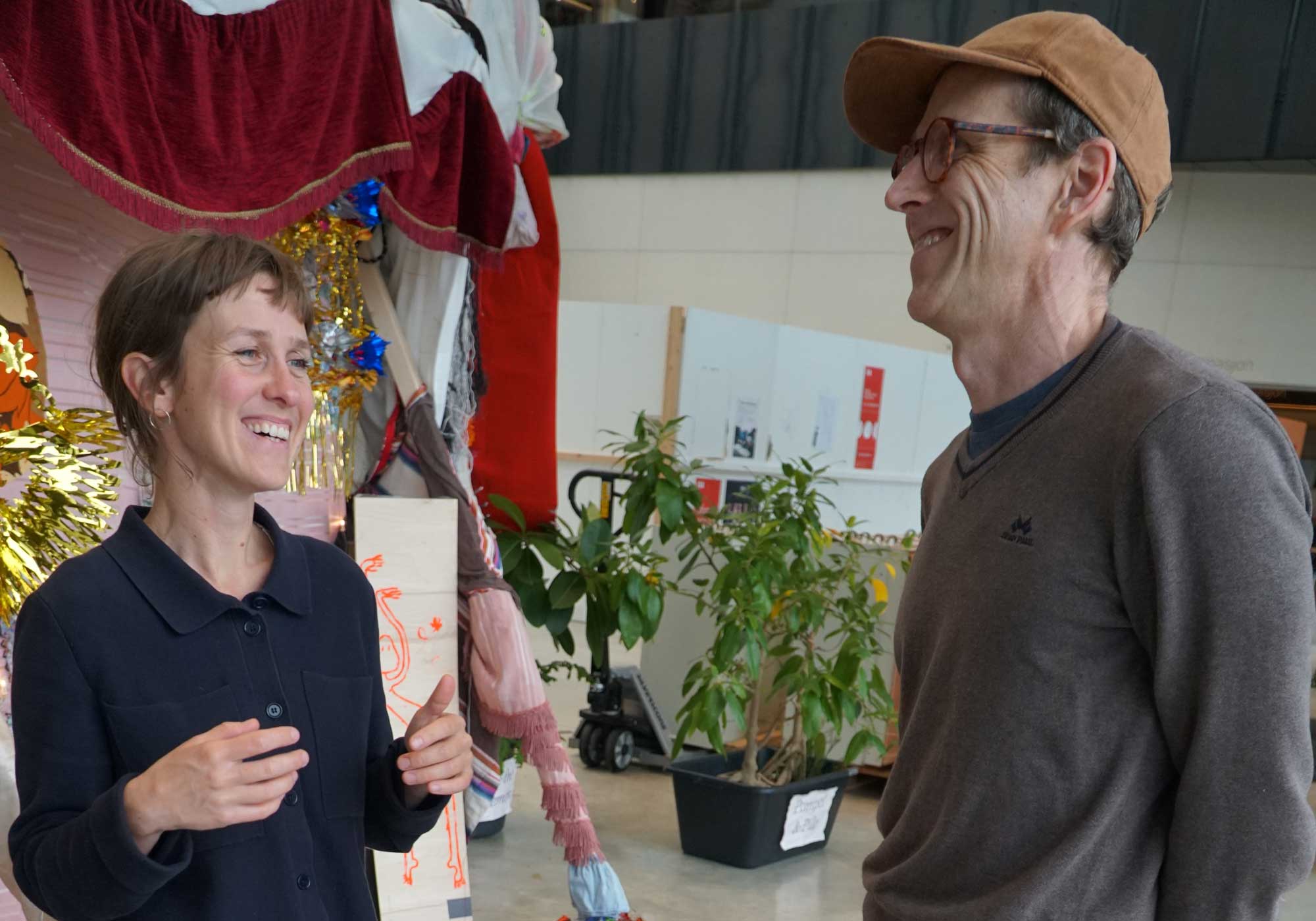Conversation between Laurie Lax and Rune Salomonsen

(Photo: Alexandra Vargas)
The first coordinator of Prøverommet, Rune Salomonsen, sat down with Laurie Lax last week to have a talk about Prøverommet and what to expect from the new coordinator.
You can listen to the whole interview here (podcast)
Rune: When did you visit Prøverommet for the first time?
Laurie: That was probably the year I got here in 2016, when I started my master in art, and I went to the public library and there was a mixture of things happening. I remember viewing a dance piece from above and she was using the shelves of the library as some sort of restraint or … yeah, it was cool to see … and another dance piece more recently. That was the last one I went to, in Verkstedet or Kode 2, the space that Bergen Assembly used, where Lisa Bysheim transparently was showing her working process with two dancers and how they incorporate text and dancing. It was a nice insight into how dancers work, because it's not my discipline.
R: Well, dance is a very open and communicative art form. I remember it worked very fine in Prøverommet together with the other things. … You can put anything into it.
L: Did you program some dancers as well?
R: Yes, if you go back, I was working with Prøverommet the first five years, and if we got hold of some dancers if was gold. The idea was always to mix the genres. The more mixing the better, pure quantitative measures almost, working better together with the rest and gathered different audiences from the different milieus. This gave us both more audience and introduced otherwise isolated milieus to each other.
L: That's exactly why I applied for the job. As an audience members I am most exited when one discipline spills into another. At some point in education art started to get separated, and depending of background or what type of school you went to, some went towards drama, some went towards dance, some towards painting maybe …
R: Yes it's very normal and typical …
L: But I think art's ability to transgress boundaries is what I find exciting, and that happens when you mix genres. And also the audiences come with such different codes and conventions.
R: You said you already prepared some ideas of what you would make out if it. Perhaps we can get them out?
L: I am thinking of not only mixing disciplines, but also contexts. That is already happening with Prøverommet and its use of different venues as well …
R: When Prøverommet was starting up in Teatergarasjen in 1998, when the theatre was still there, there was a foyer, a very special one (Trump language!). We were only meant to use this foyer space with a bar in it. The rest of the theatre was reserved for companies on the season program. But once in awhile we got access to the whole space. And also to the docks outside. There was one time we had a boat, a rowing boat, and we displayed a wedding dress under the docks. So the audience got into the boat, and we went in under, and it was really low (or the water was high) so we had to bend down to get in there, it was very exciting and exotic. … This is one kind of context, and once, like one of the first evenings, there were some climbers that came with an artist or some climber artists, and ten of them where hanging above people under the tribune. It was a tribune you could put together to get room for big concerts, so in the bar people sat in the empty space under it. And the climbers where hanging above the tables where people were sitting, holding themselves or wrapped up, but for the whole evening looking down on people talking to each other or watching what else was going on.
L: That sounds good, it's funny you said that because that is linked to the idea of what I would like to do.
R: So good, then were coming back to the origin … and it harmonizes with the idea of crossing boundaries or to stress the normal idea of a scene and the place of a scene, where it should be, it could be above or below.
L: And it goes all the way for me back to 2010, I was programming an area of a small local festival with a couple of friends. We where orgnaizing events, very DIY ['do it yourself', without the aid of professionals] you know, and we would have a trapeze artist as well as a poet and a mathematician. So the audience could ask all the stuff they wanted to know about maths and he would try to explain. For me it is actually so exiting that I actually have a job in what I have been doing in a DIY-sense for so long, and gradually have brought into more professional contexts.





